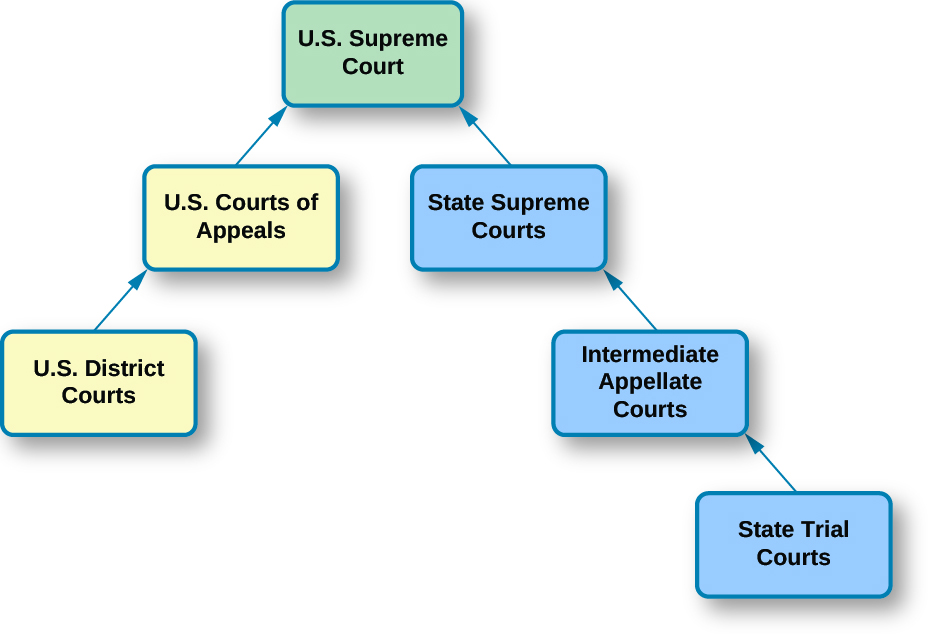| << Chapter < Page | Chapter >> Page > |
By the end of this section, you will be able to:
Before the writing of the U.S. Constitution and the establishment of the permanent national judiciary under Article III, the states had courts. Each of the thirteen colonies had also had its own courts, based on the British common law model. The judiciary today continues as a dual court system , with courts at both the national and state levels. Both levels have three basic tiers consisting of trial court s , appellate court s , and finally courts of last resort, typically called supreme courts, at the top ( [link] ).

To add to the complexity, the state and federal court systems sometimes intersect and overlap each other, and no two states are exactly alike when it comes to the organization of their courts. Since a state’s court system is created by the state itself, each one differs in structure, the number of courts, and even name and jurisdiction. Thus, the organization of state courts closely resembles but does not perfectly mirror the more clear-cut system found at the federal level.
Cases heard by the U.S. Supreme Court come from two primary pathways: (1) the circuit courts, or U.S. courts of appeals (after the cases have originated in the federal district courts), and (2) state supreme courts (when there is a substantive federal question in the case). In a later section of the chapter, we discuss the lower courts and the movement of cases through the dual court system to the U.S. Supreme Court. But first, to better understand how the dual court system operates, we consider the types of cases state and local courts handle and the types for which the federal system is better designed.
Courts hear two different types of disputes: criminal and civil. Under
criminal law , governments establish rules and punishments; laws define conduct that is prohibited because it can harm others and impose punishment for committing such an act. Crimes are usually labeled felonies or misdemeanors based on their nature and seriousness; felonies are the more serious crimes. When someone commits a criminal act, the government (state or national, depending on which law has been broken) charges that person with a crime, and the case brought to court contains the name of the charging government, as in
Miranda v. Arizona discussed below.

Notification Switch
Would you like to follow the 'American government' conversation and receive update notifications?